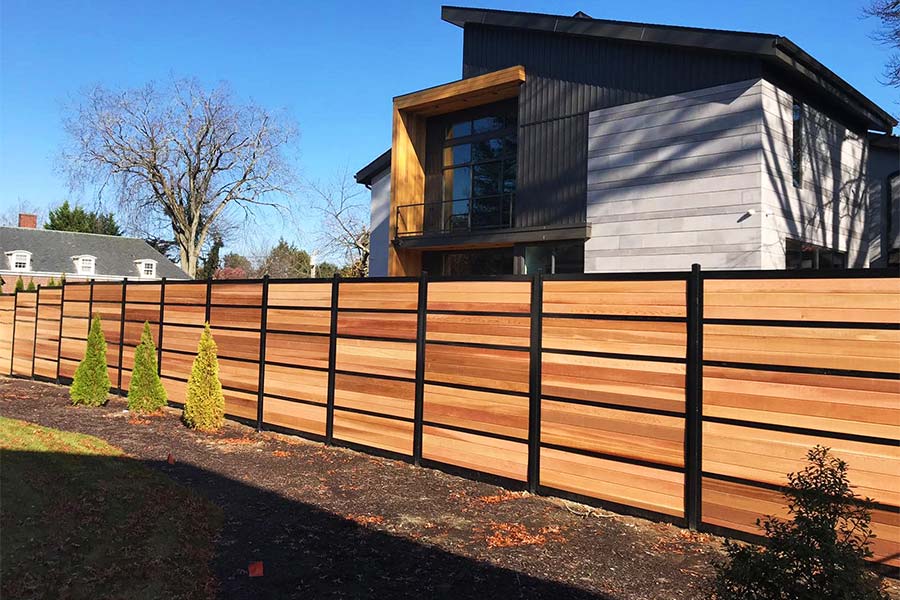All Categories
Featured

When thinking about installing a fencing on your building, among one of the most crucial actions is to understand whether you need a permit. Fence installments commonly call for a permit to ensure that the framework follows regional zoning regulations, building codes, and safety and security requirements. The certain authorizations called for can vary depending on your place, the kind of fence you plan to install, and the height or placement of the fence. Here's a guide to help you browse the procedure of getting a fence license and make sure that your installation is hassle-free and lawful.
Why You Required a Permit for a Fencing Installation. The permit process helps regional authorities validate that your fence does not conflict with traffic visibility, respect your building lines, or violate elevation restrictions. Installing a fence without a permit can result in penalties, elimination of the fence, or delays in building and construction, so it's crucial to check whether a license is called for prior to starting your project.
Kinds of Licenses You Might Need. There are a couple of common kinds of permits you could need for a fencing installation:
Building License. A structure authorization is the most common authorization required for fence installments. This authorization makes certain that the fence meets safety standards and is built according to local building codes. A building authorization is usually needed if the fence surpasses a specific height (often 6 feet), is constructed from specific materials, or lies near a public pathway or road.
Zoning License. A zoning permit might be needed to verify that your fencing follows local zoning regulations. Zoning guidelines can determine where a fencing can be positioned on your home, just how high it can be, and whether it is allowed particular areas (such as along residential property lines or ahead backyards) Some towns have regulations limiting the height of fencings in the front lawn to ensure presence for pedestrians and motorists.

Trouble License. If you are developing a fencing near your home line or close to a road, you may require a problem authorization. A trouble describes the range a framework, including fences, must be from the home line. Trouble laws vary by place, and ensuring that your fence is positioned correctly can protect against problems with next-door neighbors and stay clear of violations.
Property Owner Association (HOA) Authorization. If you stay in a community regulated by a Property owner's Organization (HOA), you might require approval from them in addition to local authorizations. HOA regulations often cover the kind of products, height, design, and shade of fencings. Even if your city government doesn't need a license, your HOA may still have certain guidelines that require to be complied with.
Just How to Apply for a Fence Authorization. To look for a fence authorization, you'll need to contact your neighborhood building department or preparation office. The application process generally includes loading out a type, paying a cost, and submitting a website strategy of your residential property that shows the suggested location of the fencing. You may likewise require to include details concerning the materials, elevation, and layout of the fencing.
In some instances, a local authorities may require to check your home prior to approving the permit. Once the authorization is approved, you will be accredited to continue with your fencing setup.
When Is an Authorization Not Needed? In certain situations, a permit might not be needed. These circumstances can consist of:
Reduced Elevation Fences: In many locations, fences that are below a certain elevation (typically 3 to 4 feet) might not need a license, specifically if they are placed in the backyard or various other non-visible locations.
Fencing Replacement: If you're changing an existing fence with the same elevation and material, some locations might not call for a new license.
Non-Obtrusive Fences: Momentary or attractive fences, such as those made use of for gardening or landscaping objectives, may not need licenses as long as they are low and not permanent.
Nonetheless, it is necessary to consult your regional zoning workplace or building division, as regulations can differ by territory.
Repercussions of Not Obtaining a License. Falling short to acquire the necessary licenses can result in substantial repercussions. These consist of penalties, required removal of the fencing, or perhaps hold-ups in building and construction. Additionally, if your fencing does not meet regional guidelines, you can deal with legal issues with next-door neighbors or regional authorities.

Final thought. By making sure that you follow regional guidelines and obtain the necessary authorizations, you can ensure and prevent costly errors that your fence is legally compliant. Inspect with your neighborhood structure division, HOA, and zoning office to determine what permits are needed for your certain fence project.
Latest Posts
Don’t Miss Exclusive Auto Repair Offers in Chicago at Montclare Auto Repair
Published en
1 min read
Improve Your Home's Exterior with Weathercraft's House siding Solutions
Published en
1 min read
Safeguard Your Financial Investment with Professional Rain Gutter Installation
Published en
1 min read
More
Latest Posts
Don’t Miss Exclusive Auto Repair Offers in Chicago at Montclare Auto Repair
Published May 27, 25
1 min read
Improve Your Home's Exterior with Weathercraft's House siding Solutions
Published May 23, 25
1 min read
Safeguard Your Financial Investment with Professional Rain Gutter Installation
Published May 20, 25
1 min read